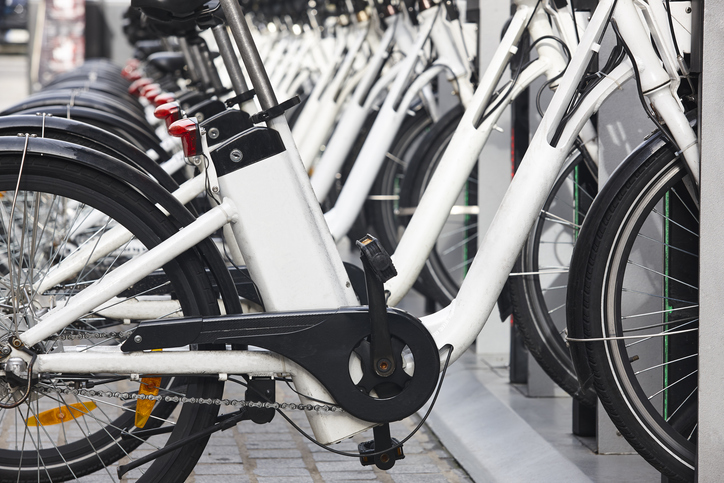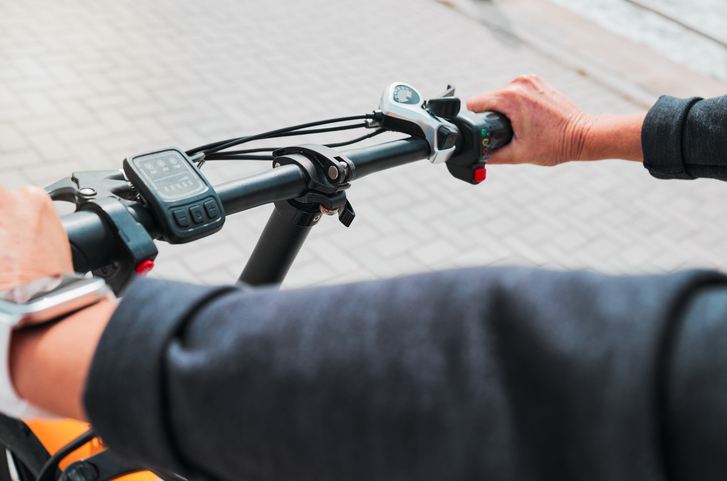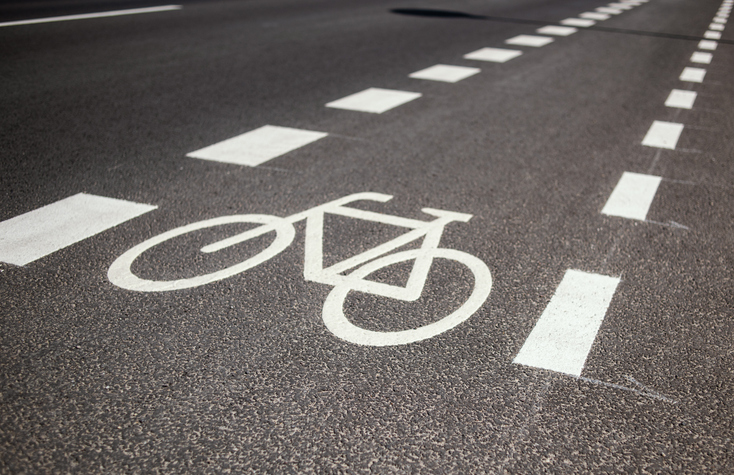
Electric bicycles have surged in popularity because they are an affordable, efficient, and eco-friendly alternative mode of transportation. However, understanding California electric bicycle laws and safety measures surrounding e-bikes is crucial to ensure a smooth and safe riding experience.
If you’ve been injured in a San Francisco e-bike accident caused by another person’s negligence, consulting with an experienced bicycle accident attorney is crucial. A personal injury attorney can help you hold the other party accountable for your injuries and losses. Read on to learn California electric bicycle laws and provide essential safety tips for riders.
What Is an Electric Bicycle?
Unlike traditional or conventional bicycles, electric bicycles don’t rely on soley on human power for propulsion. An electric bicycle, often referred to as an e-bike, is a bicycle equipped with an electric motor to provide assistance while pedaling.
These motors are typically powered by rechargeable batteries. E-bikes from models with pedal-assist systems to those with throttle controls for motorized propulsion.
Motorized Bicycles Vs. Moped
It’s important to distinguish between motorized bicycles and mopeds, as they are regulated differently under California law. A motorized bicycle, including an e-bike, is equipped with pedals and an electric motor with a maximum output of 750 watts.
In contrast, a moped or motorized scooter typically features both pedals and a gas-powered engine with a displacement of less than 50 cubic centimeters (cc). Mopeds are subject to a registration fee and licensing requirements.
3 Classes of Electric Bicycles

California categorizes e-bikes into three classes based on their maximum assisted speed and mode of operation:
Class 1 E-Bikes
The electric motor only assists when the rider is pedaling. The max speed is 20 mph.
Class 2 E-Bikes
Class 2 e-bikes are equipped with a throttle that works when you aren’t pedaling. This kind of e-bike is also limited to a top speed of 20 mph.
Class 3 E-Bikes
Class 3 electric bicycles pedal-assist and can reach speeds of up to 28 mph but require riders to pedal for motor assistance. They must have a speedometer, but they may or may not have a throttle.
E-bikes provide a boost up to their speed limits. However, electric bikes motors must disengage when brake functions are applied and use a switch or mechanism that, when released, will cause motor function to cease.
California Electric Bicycle Laws

E-bike riders must follow the same traffic laws as traditional bicycle riders, including signaling turns and obeying traffic signals.
Who Can Operate an E-bike in California?
- Currently, there are no age restrictions on Class 1 and 2 e-bikes.
- Riders must be at least 16 years old to operate a Class 3 e-bike.
Do You Need a License to Drive an Electric Bike in California?
No, you do not need a driver’s license to operate an electric bike in California. However, riders must comply with California electric bicycle laws including age restrictions, and helmet laws.
Age Restrictions for Riding an Electric Bike in California
While there are no age restrictions for operating Class 1 and Class 2 e-bikes in California, riders must be at least 16 years old to ride a Class 3 e-bike.
Do You Have to Wear a Helmet on an Electric Bike in California?
- For Class 1 and 2 electric bicycles, helmets are only required for riders under the age of 18.
- Regardless of age, all riders are required to wear a properly fitted bicycle helmet while operating a Class 3 e-bike.
Can You Ride E-Bikes on the Sidewalk in California?
While California law allows e-bikes on sidewalks unless prohibited by local ordinances, riders must yield to pedestrians and exercise caution in designated pedestrian zones. It’s essential to yield to pedestrians’ right of way and maintain a safe speed.
Can I Carry Passengers on an E-Bike?
While California law does not explicitly prohibit carrying passengers on e-bikes, it’s essential to consider safety. Riders and passengers under 18 must wear a helmet.
Where Can You Ride Your E-Bike in San Francisco?
San Francisco offers an extensive network of bike paths and routes ideal for exploring on an e-bike. Whether cruising along scenic waterfronts or navigating bustling urban streets, e-bike enthusiasts can discover the best of the city’s sights and attractions. Here are some places where you may ride your e-bike in San Francisco:
- Bike Lanes: E-bikes are generally permitted in bike lanes unless otherwise specified by local ordinances.
- Local Bike Paths: In addition to major attractions, San Francisco has numerous local bike paths and routes. From the picturesque Presidio Promenade to the vibrant Mission District, there’s no shortage of scenic routes to discover on your e-bike.
- Hiking or Recreational Trails: Class 3 electric bicycles are not allowed on any bicycle path or trail, bikeway, equestrian trail, or hiking or recreational trail, unless it is within or adjacent to a roadway or unless the local authority or the governing body of a public agency having jurisdiction over the path or trail permits them by ordinance.
Great Places to Ride Your E-Bike in San Francisco

- The Embarcadero Waterfront: Stretching along the city’s eastern waterfront, The Embarcadero offers stunning views of the San Francisco Bay and iconic landmarks such as the Ferry Building and Bay Bridge. Ride your e-bike along the dedicated bike path and enjoy the refreshing breeze as you take in the sights.
- The Golden Gate Bridge: Experience this iconic landmark from a unique perspective by biking across it. The bridge’s pedestrian and bike paths offer unparalleled views of the city skyline, Marin Headlands, and the Pacific Ocean. Cyclists must observe the 15 mph bicycle speed limit on Bridge sidewalks and slow to 5 mph around the towers.
- Golden Gate Park: Spanning over 1,000 acres, Golden Gate Park is a cyclist’s paradise, with miles of bike paths and trails winding through lush greenery and scenic landscapes.
Additionally, several e-bike rental companies operate in the San Francisco area, offering convenient options for visitors and locals alike. Whether you’re a seasoned cyclist or new to e-biking, renting an e-bike allows you to explore the city’s sights and neighborhoods at your own pace.
Safety Tips for E-Bike Riders in California
While e-bikes offer a convenient mode of transportation, bicycle accidents can result in serious injuries. In 2021, there were nearly 300,000 non-fatal injuries sustained in bicycle accidents across the US. Here are some safety tips for e-bike riders:
- Wear a Helmet: Always wear a properly fitted bicycle helmet to protect against head injuries in the event of a fall or collision.
- Follow Traffic Laws: Obey traffic signals, signs, and regulations, and use hand signals to indicate turns.
- Be Visible: Wear bright and reflective clothing, especially when riding at night or in low-light conditions, to increase visibility to other road users.
- Stay Alert: Remain vigilant and aware of your surroundings, including pedestrians, motor vehicles, and potential hazards on the road.
- Maintain Your E-Bike: Regularly inspect your e-bike for any signs of wear or damage, and ensure that brakes, lights, and tires are in good working condition.
- Ride Defensively: Anticipate potential hazards and give yourself plenty of space and time to react to unexpected situations on the road.
We Represent Personal Injury Victims
If you’ve been involved in an electric bicycle accident in California, you don’t have to navigate the legal process alone. At Golden State Accident Lawyers, our team of experienced e-bike accident lawyers is dedicated to helping injured motorcyclists seek fair compensation.
Our personal injury lawyers maintain a 99% success rate and have recovered millions of dollars in settlements and verdicts for our clients. Call us today for a free consultation.


